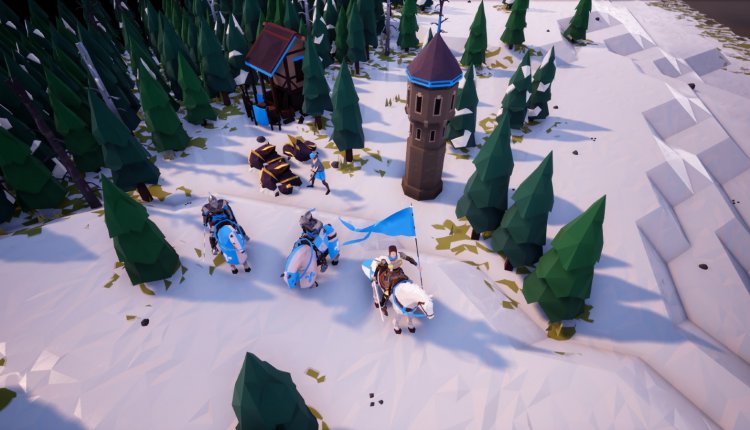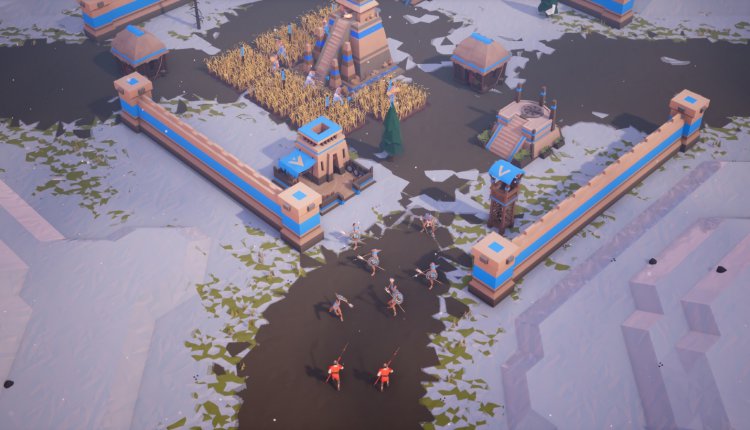Empires Apart Review — A Modern RTS, Confident on the Shoulders of Giants
Age of Inspiration
Slitherine & DestinyBIT’s Empires Apart is a rekindling of the golden age of the RTS genre, made in the modern day — in a time when building such a game for competitive multiplayer is not only viable, but an interesting offering.
We’ve been playing through Empires Apart for the last few months now, following on from the game’s first UK showcasing at the PC Gamer Weekender. There have been a couple of decent sized patches since we previewed it back in February, including stability, AI refinements, bug-fixing, and a nerf on the Mongolian faction.
It’s almost impossible to mention the game without discussing Age of Empires; the two games share a lot of features, and AoE is a massive influence on DESTINYBit’s debut title. That said, it is far from a clone of its influence; hero units, a sleeker, faster pace, and an accessible tech tree are major advantages which Empires Apart holds over those earlier RTS titles. It’s also strictly set within the medieval period, which is does exceptionally well.
Empires Apart was undeniably built with multiplayer in mind, in so much as whenever I spoke with the developers they spoke mainly on their competitive edge; On things like the map generation being slightly randomised, and with better allocated resources. Lots of little things which give away the developer’s experiences with the competitive scene and with the genre. Experiences from the past leading development goals is, in my experience, a recipe for a feature-rich game.
In its purest form, the game is a 90s-style RTS. You gather resources, then build a base and expand it, while increasing your resource output and building your own army. The biggest difference between the classics and the new is how each of the different factions play and how each faction’s technology works. Each faction, from Byzantines to Mongolians, have different units, buildings, and techs to unlock. While resources are certainly used in the same way as the game starts, and are most definitely required, the Aztecs need to build less units as their warriors evolve through combat. Similarly, the Mongolians do not need to spend as much on their bases because they can pack up their entire camp and so simply build more of the worker-style units as to expand the base.
These vast differences between factions really challenge usual playstyles. When you drop into a game with three, five, or as many as seven others it is always worth checking the menus to see what the others are playing as and adjusting accordingly. This also makes the game very interesting when played in teams, as factions can be quickly repurposed to different playstyles. The previously mentioned Mongolians can quickly rip up their entire base into an expeditionary force, quickly invading and claiming the land of a former enemies. The French cavalry’s charge is deadly on offence, but also serves as a lethal support, holding a front-line while allies move up reinforcements to finish the job.
The game includes a variety of modes. Conquest is a relatively conventional mode, you have to wipe out all enemy town centres and make sure they don’t rebuild it before the timer ticks down. Assassination has players wipe out one-another’s hero units, powerful single-instance units which have game-changing powers — there’s a choice of heroes, and having a commander style unit gives the game a very different pace. There’s also Diplomacy and Assassination Diplomacy modes which allow players to negotiate alliances in real-time, which makes for some interesting, and dramatic betrayals.
In addition to the above there’s a challenge mode, an offline-only mode which has challenges themed around each of the factions — they’re fun little efforts, and serve to prepare you for competitive play. There’s also Survival Mode, which is solo only, but with time will become good enough to almost be sold as its own game.
Empire Apart‘s Survival Mode is a wonderful inclusion. It sees the player building a base up in a small, compact map. Player’s occupy the centre of a crossroads and must build quickly build up their base as the sun will soon set. When it does enemies of increasing difficulty will start to attack. At first your Town Centre and scout can defeat most enemies, however after a few evenings you’ll need to have started to send out your workers during the day and built up defences (and a small army) as the difficulty starts to ramp up.
As I said, I feel that in time the Survival Mode will grow to be strong enough to be its own game. With more maps, tweaks made to enemy spawns and types, and a few quality of life changes about how resources are spawned (and possibly spawning in more as time passes) it could really be something special.
 Sadly, the mode is also one of the places where the game’s biggest quirks are showcased. Pathfinding in games is hard and Empires Apart definitely needs some work on this: units will walk into walls when they are trying to get past, or will strafe along objects before continuing their pacing into trees. While under constant siege it also becomes very obvious that the game is lacking in workers using their initiatives when repairing buildings and defensive structures. In my opinion the worker’s ‘repair’ action button should instead be a ‘repair initiative’ toggle which, when on, would see them repair adjacent buildings and wall pieces. Walls, also, cannot be upgraded from wood to stone — meaning you’ll either be spamming the delete key to remove them as others are erected, or you’ll end up with unnecessary, multiple layers of walls.
Sadly, the mode is also one of the places where the game’s biggest quirks are showcased. Pathfinding in games is hard and Empires Apart definitely needs some work on this: units will walk into walls when they are trying to get past, or will strafe along objects before continuing their pacing into trees. While under constant siege it also becomes very obvious that the game is lacking in workers using their initiatives when repairing buildings and defensive structures. In my opinion the worker’s ‘repair’ action button should instead be a ‘repair initiative’ toggle which, when on, would see them repair adjacent buildings and wall pieces. Walls, also, cannot be upgraded from wood to stone — meaning you’ll either be spamming the delete key to remove them as others are erected, or you’ll end up with unnecessary, multiple layers of walls.
Despite those few flaws, the game feels well balanced, with factions either better at defensive or offensive starts; it can be a bit chaotic in All-vs-All 8-player matches, but it’s all good fun. Empires Apart is more than simply an Age of Empires inspired title and it will hopefully build a community which matches its ambitions.
Empires Apart is available now on Windows PC, you can grab it through publisher Slitherine’s store, or digitally through Steam, below.


Comments are closed.